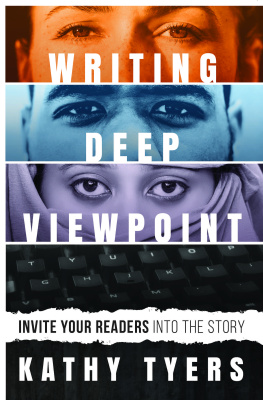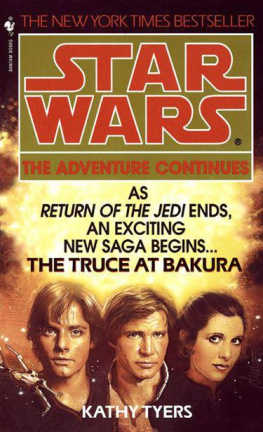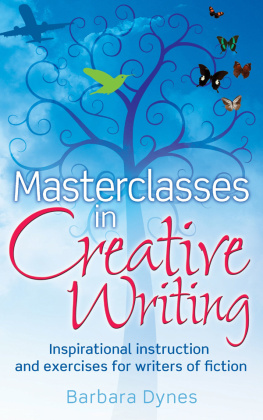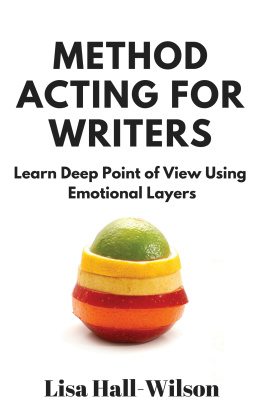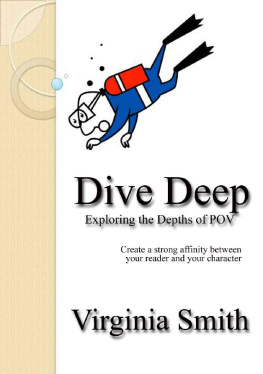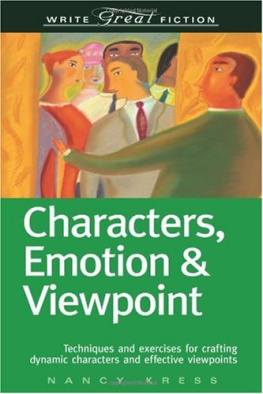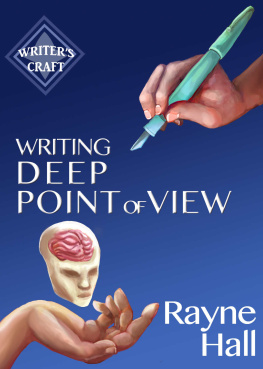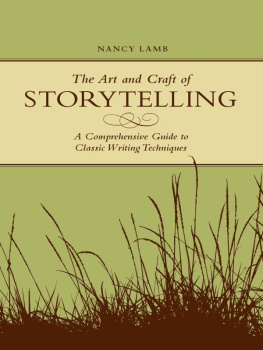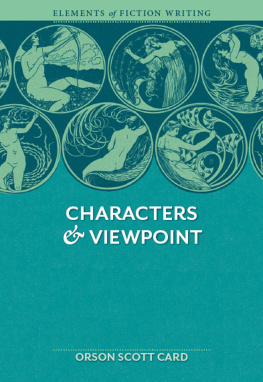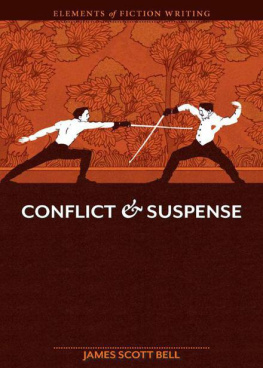There is no single component of the writing craft as vital to good fiction, and to developing an artistic voice, as point of view. The term covers a great deal of ground, but basically boils down to sharing the world of your characters, starting from within. Writing Deep Viewpoint helps establish a foundation from which a novelist can spread artistic wings and fly. Highly recommended.
Davis Bunn, NYT bestselling author.
Writing Deep Viewpoint by Kathy Tyers
Published by The Christian Writers Institute
24 W. Camelback Rd. A-635
Phoenix, AZ 85013
www.christianwritersinstitute.com
ISBN: 978-162-184-0855
Writing Deep Viewpoint: Invite Your Readers Into the Story
Copyright 2017 by Kathy Tyers Gillin
All rights reserved. No part of this book may be reproduced or transmitted in any form or by any means, electronic, mechanical, including photocopying and recording, or in any information storage and retrieval system without prior written permission from the publisher.
Cover design by Five Js Design
Image credits: Unsplashfreestocks.org | William Stitt | Debashis Biswas | Anas Alshanti
Printed in the United States of America
CONTENTS
AUTHORS NOTE
Many examples in this book are taken from my own novels. This isnt because I think theyre outstanding (though I think theyre okay, of course). Its because I want to honor other authors copyrights. Its the law. For this book, the author and publisher have been consulted and have granted permission to quote.
Please get permission if you quote from other authors works.
ACKNOWLEDGMENTS
Thank you, Steve Laube, for encouraging me to write this bookand all of the novels along the way. I also owe heaps of gratitude to Sharon, Jenny, Susan, and Nadine for helpful feedback and suggestions. Thank you!
NOTE TO THE EBOOK READER:
Throughout Writing Deep Viewpoint, I give examples to illustrate the ideas in the text. I planned to present them in a different font (type style), but some ebook platforms don't support multiple fonts. Our solution was to make the example texts slightly smaller and remove all of the serifs -- the slight thickening of some parts of each letter that make them look more formal or bookish. I hope the examples are helpful and easy to find!

CHAPTER 1
VIEWPOINT, THE KEYSTONE
What does a reader wantat the deepest levelwhen she curls up with a good book?
Lets set aside the student who needs to write a report for a class, the traveler who needs information, or the cook looking for new recipes. I mean readers like us, who stand in a bookstore or subscribe to a book review service or browse a website, searching for just the right novel. What are we looking for?
I have a theory.
People who read fiction want to feel like theyve been somewhere else, to experience an episode of life as if they had been someone else, maybe someplace where its impossible, impractical or even dangerous to gobut they want to spend time in a situation that grabs and holds their interest. They want to know, What would it be like to be the person in that story? They want to explore the human experience, to come away enriched and enlivened.
Its possible to get a similar experience watching TV or a film. With enticing visuals, skillful acting, and moving background music, filmed stories can take us to other places and times, even places that dont exist and times that have never been.
But written fiction is different.
When I sit in my comfy chair, readingeither on paper or electronicallyI forget that Im staring at squiggles on a flat surface that other English speakers have combined into units of meaning called words. In my mind, as I sit in that chair I become Frodo leaving the Shire, or Lucy mourning over the murdered Aslan, or Hermione desperately waving her hand to be called on in class.
Those of us who write short stories, novellas, poems, or novels have an advantage over the people who write for film: unassisted by the staff of hundreds in a typical movie-ending scroll, our readersall alonecan feel as if they have actually become the characters they read about. An absorbed reader forgets that shes on an internal journey.
It doesnt always happen, though.
Some story lines dont convince a thoughtful reader. Some fictional characters just dont appeal to everyone. As writers, we understand that. We read, too. We have preferences. Still, we want to create books that make the full-immersion reading experience easy to enter.
Think about how that happens. What does fiction writing entail?
Well, its an art, a craft, a business, and sometimes a ministry. Its an art because spinning an interesting tale takes inspired creativity. Inventing characters that readers love and believe in is also an art. Art also often means striking a balance between following a writing rule and ignoring it to make a scene more effective.
Thats because writing is also a craft. While art comes straight from the writers heart (it develops over a lifetime of reading, as well as observing and handling real-life troubles), anyone who practices a craft must learn to use its tools. After all, similar pointed objects might be wielded by sculptors or carpenters. Writers tools involve word choices instead of chisels and screwdrivers, and the quality of the stories we build will depend on how well we learn the craft.
This book is about a cluster of tools that wordsmiths use to create compelling stories. Its a book of advice, not unbreakable rules but ways that you can utilize those writing tools. Its central concept, deep viewpoint, is a way to make your readers feel that they have entered into your story and are living there. Thats the experience I believe readers want.
Our writing goal is to communicate story and truth so that it leaves a writers mind to live in someone elses. Have you noticed that the most absorbing part of a sermon or lecture often comes when the speaker pauses the exposition to illustrate that truth with a story?
Strong fiction shows real human nature and the consequences of conflicts or mistakes. A speech or an exegetical sermon can tell me about a truth, but a story can make me feel as if Ive been the character who made those choices, went to those places, interacted with those other characters and experienced the aftermath.
Picture this: When a reader opens a book, she stands in front of an archway that leads into a story. Whether shell enter, and whether shell stay inside to the end, often depends on the authors skill. That arch is built of storytelling techniques, including smoothly written dialogue, believable settings, and intriguing characters in convincing conflict. Like the keystone at the top of an arch, viewpoint holds all the other skills in place. They support viewpoint, and it anchors them all together.
Our readers want to enter our stories and experience our characters lives. Part of our job is learning to help them to do thatlearning how to invite them in. Distracting them can kick them right out of the story, and there are so many potential distractors. Spelling or punctuation errors. Poor proofreading. Bad logic. Unbelievable characters. Confusion. Sooner or later, a reader whos confused will put the book down.
We compete for our readers time with everything from Whats in the refrigerator? to Whats new online? We need to bring them and hold them inside the story

